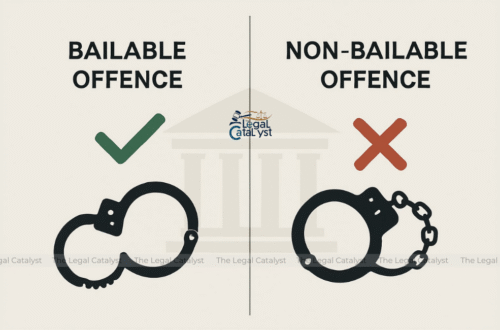India follows a well-structured hierarchy of Courts, ensuring justice is accessible at every level. This structure distributes judicial power across different courts, from the grassroots level to the apex court. Understanding this hierarchy is essential for law students, practitioners, and citizens. It reflects how justice travels from trial to appeal.
1. Trial Courts (District and Subordinate Courts)
At the base of India’s judicial system are trial courts, which deal with the majority of cases.
- Civil Courts: Handle disputes related to property, contracts, family issues, and more.
- Criminal Courts: Includes Chief Judicial Magistrates, Metropolitan Magistrates, and Sessions Courts, dealing with offences based on their gravity.
- Family Courts: Specialised courts for matrimonial disputes, divorce, custody, and maintenance.
- Small Causes Courts: Deal with petty civil disputes like rent or service-related issues.
Trial courts are the first point of contact for most litigants and ensure that justice begins at the grassroots.
Also Read- Difference Between Bailable and Non-Bailable Offences
2. High Courts
Every state (or group of states) has a High Court, which is the highest judicial authority at the state level.
- Jurisdiction: Original, appellate, and writ jurisdiction under Article 226 of the Constitution.
- Superintendence: High Courts supervise subordinate courts within their territorial jurisdiction.
- Appeals: Decisions from district and sessions courts can be challenged before the High Court.
High Courts play a crucial role in upholding fundamental rights and checking executive or legislative excesses at the state level.
Also Read- Indian Laws “Light Years Behind” Technology: Justice Manmohan
3. The Supreme Court of India
At the top of the judicial pyramid stands the Supreme Court, established in 1950 under Article 124 of the Constitution.
- Jurisdiction:
- Original: Disputes between states or between the Union and states (Article 131).
- Appellate: Hears appeals from High Courts and tribunals.
- Advisory: Under Article 143, the President can seek advice on legal matters.
- Constitutional Role: Final interpreter of the Constitution; protector of Fundamental Rights under Article 32.
- Binding Precedent: Its decisions are binding on all other courts in India.
The Supreme Court is rightly called the guardian of the Constitution.
Also Read- The Basic Structure Doctrine: India’s Unique Contribution to Constitutional Law
Hierarchy in a Nutshell (Simplified Flow)
Supreme Court of India
▲
High Courts
▲
District & Sessions Courts
▲
Magistrate & Civil Courts
Why This Hierarchy Matters
- Access to Justice: Citizens can approach courts at the local level.
- Appeal Mechanism: Wrong judgments can be corrected by higher courts.
- Checks and Balances: Prevents misuse of power by state or central authorities.
- Specialization: Different courts handle specific types of cases efficiently.
Conclusion
The Indian judiciary is not just a system of courts, but a safeguard of democracy and fundamental rights. Trial courts address everyday disputes. The Supreme Court decides constitutional questions. This judicial hierarchy ensures that justice is delivered. It is also preserved at every level.
Connect with us on Instagram – X – LinkedIn for daily updates, quizzes, and other materials.







